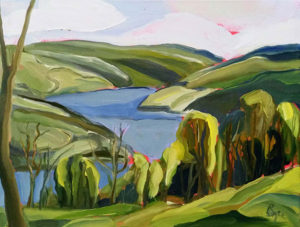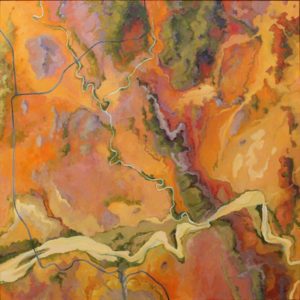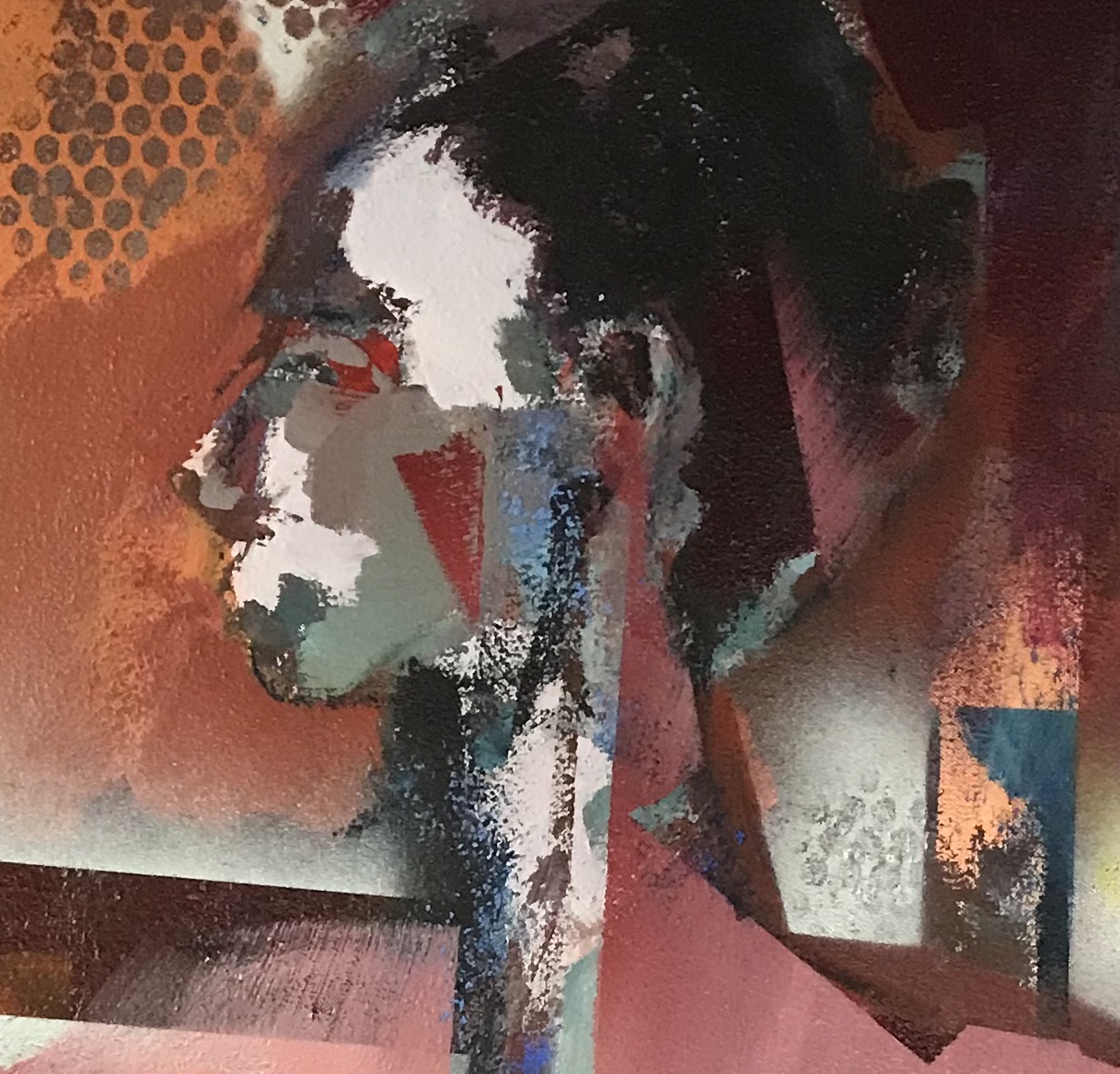Transformations at Oxford
At Oxford Gallery, “Transformation” offers new work from three artists who are finding different ways to split the difference between representation and abstraction.

Keuka Bluff, Phyllis Bryce Ely
In my favorite work from Phyllis Bryce Ely, the forms emerge under curls of heavy paint shaped like solidified candle smoke. Lately, and maybe for longer than I’m aware, she’s been laying down an undercoat of bright reddish-orange, as a ground, and then painting in tones complementary to that first coat, letting it peek through here and there the way Thiebaud does, suggesting a field of energy behind the visible. There’s little in the formal qualities of her work that reminds me of Burchfield, except maybe the ghostly way he evoked clouds at night, but her images have a similar numinous quality. Jim Hall’s comparison to the Group of Seven is apt. In her work, there’s more than an echo of Lawren Harris’s glowing landscapes under cold Northern light.

Desert Solitaire 18, Barbara Page
In her aerial views of cultivated land, Barbara Page offers striking abstractions that allow her to improvise with rich, lush color. In Desert Solitaire 18, the course of creeks and rivers rend the image, this way and that, like slow squirming bolts of lightning. Those sinuous lines of pale blue or green or cream break up areas of tilled earth she pushed up the spectrum into red and orange. Like the carefully rendered watershed, the topographical meanderings of edges between woods and field serve as backdrop for boundaries, just as serpentine. And then a blue line, a highway maybe, moves up the canvas, forking into a pair before heading off the edge, suspended over all of it like a line in the sky. As Jim Hall points out on the gallery’s site:
Page came to national prominence with “Rock of Ages, Sands of Time,” an installation consisting of 544 square panels, each panel representing one million years of the history of the earth. The installation formed the centerpiece of the Museum of the Earth, which opened in 2003 outside Ithaca, NY. With uncanny consistency, each panel reads as both a representation of a fossilized remains and as a painterly abstraction, and our fascination resides in its assuming a dual role as object of scientific interest and object of beauty. This project was followed by a similar installation of 268 porcelain tiles lining a pedestrian bridge at the North Carolina Museum of Natural Sciences.
In A.J. Dungan’s recent work, he seems to be pushing toward flatter images—in his last show, some of his figures seemed bulkier, like Bacon’s, where the energy of his brushwork supplemented the sense of depth. Here, many of the paintings look even more Cubist. He uses what appears to be MORE
